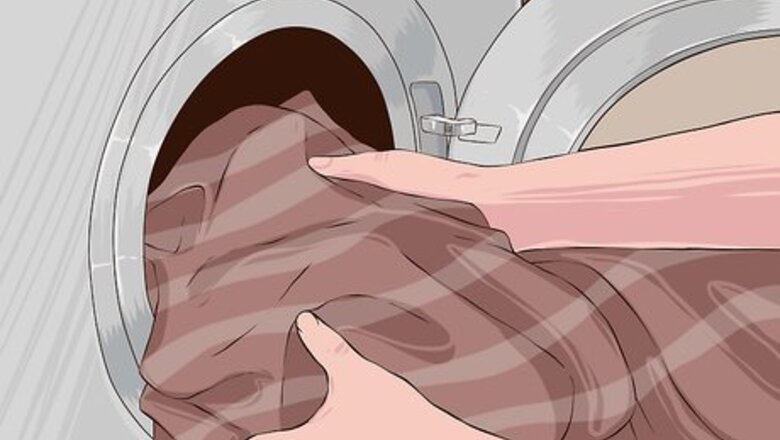
views
Cleaning, Repairing, and Recycling Your Winter Wardrobe
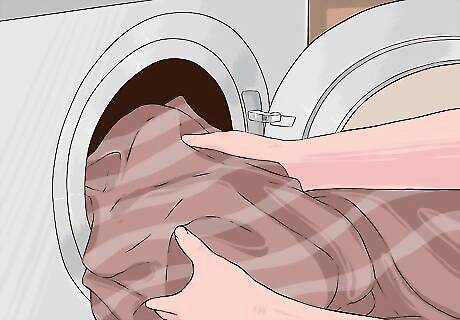
Machine wash or dry clean all of your winter items. When stored for long periods of time, dirty clothing attracts pests and can also produce unwanted odors, mold, or mildew. Unclean items that contain perfumes, lotions, oils, and/or perspiration can also cause fabric to stain and yellow. Before you pack up your winter wardrobe for several months, you should properly launder each article of clothing. Machine wash all of your non-delicate winter items. Dry clean any winter items made from natural materials, like silk, wool, and cashmere. Do not store these items in a plastic garment bag.
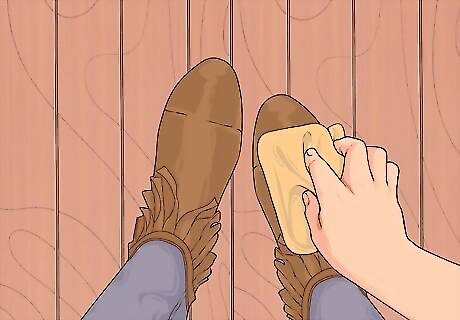
Wipe down and polish your shoes. Winter shoes come into contact with harsh salts and dirt. Prior to storing these items, thoroughly clean each pair. Remove built up salt and grime with a cotton cloth or shoe brush. Don’t forget to polish and condition your leather boots. If your winter shoes are badly stained, consider having them professionally cleaned. To prolong the life of your winter shoes, clean them frequently throughout the winter too.
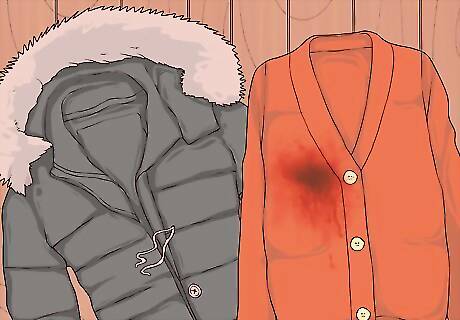
Send out items for repair. As you wash, dry clean, and clean your winter items, set aside any pieces that appear damaged or broken. This might include coats with missing buttons, clothing with minor rips or stains, and/or shoes in need of new soles. Bring the items you are interested in fixing to a reputable seamstress or shoe repair professionals. If you don't have an interest in fixing the item, find a way to recycle it.

Donate items you will no longer wear. While you sort through your clean winter apparel and accessories, set pieces aside to donate. These items may include garments that no longer fit you and/or items you didn’t wear at all last season. There are several ways to recycle these items. Ask friends if they are interested in taking any of the pieces. Donate the items to a person in need. Bring the items to a donation center and ask for a tax deduction form. Sell the items to a consignment shop. Host a garage sale.
Storing Winter Clothing
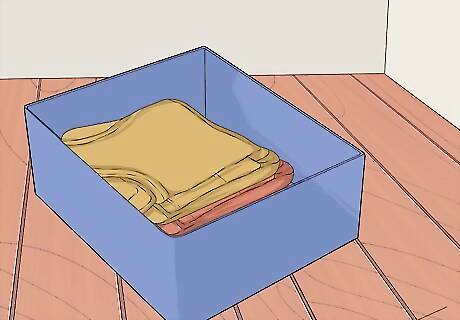
Place your non-delicate items into plastic bins. Plastic containers are ideal for seasonal storage of your non-delicate clothing. Fold and place the heaviest items, like jeans and sweatshirts, in the bottom of the plastic bin. Place neatly folded shirts, skirts, and tights on top of the bulky bottom layer. While vacuum bags help you save space, they do not allow your garments to breathe. Plastic bins are great for short term storage. If you need to store clothing for more than a season or two, place the garments in a cotton storage bag or box. Instead of mothballs, consider using lavender sachets or cedar balls to keep your clothes smelling fresh and pest free.
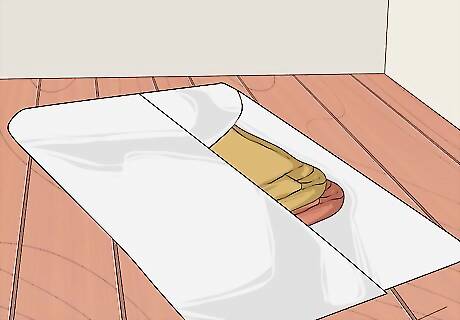
Wrap your delicate items in tissue paper. Storing your delicates requires a bit more finesse. When your delicates return from the dry cleaner, remove them from the plastic garment bag. Carefully fold each item, wrap it in acid-free tissue paper, and then place it into a cotton storage bin. Plastic garment bags do not allow your natural fiber clothing to breathe properly.
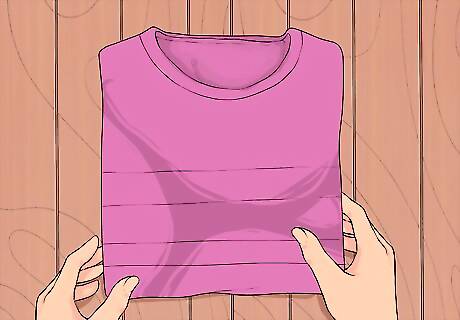
Fold your sweaters. Sweaters and hangers don’t mix—when you hang up a sweater, the garment becomes misshapen. Instead of hanging up sweaters, fold them neatly. Place your heaviest sweaters at the bottom of your plastic storage bin or cotton garment bag. The lightest sweaters should lay on top of your heavier articles. Do not over stuff your storage bins. Instead, loosely pack your sweaters so that they can breathe. EXPERT TIP Leave a few light jackets and sweaters in your closet so you can easily add a layer for cool summer nights. Hannah Park Hannah Park Professional Stylist Hannah Park is a professional stylist and personal shopper with experience in e-comm styling, celebrity styling and personal styling. She runs an LA-based styling company, The Styling Agent, where she focuses on understanding each individual she works with, and crafting wardrobes according to their needs. Hannah Park Hannah ParkProfessional Stylist
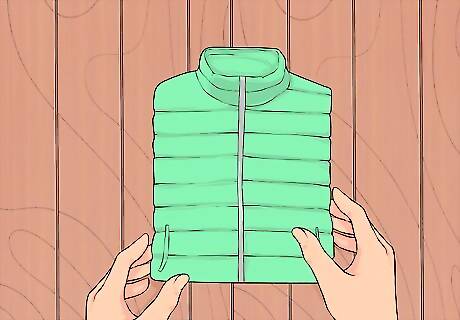
Fold and store your winter coats. Once the seasons turn from winter to spring, it is tempting to hang up your bulky winter coats in the back of your closet. However, allowing your coats to hang throughout the spring and summer may distort their shape. The best method for storing coats is to fold them up and place them inside a plastic bin. Remove all of the items from your coat pockets. Wash or dry clean your coats. Fold up your coats and place them into a plastic or cotton storage bin. Do not over stuff the bin.
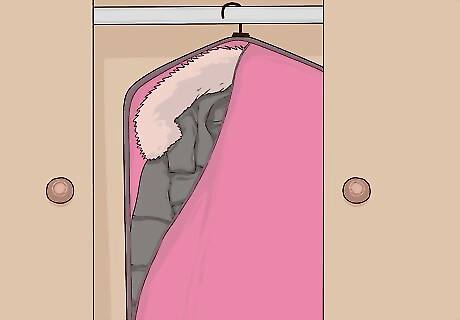
Hang up your furs and dresses. Furs and dresses are the only fall/winter items that should remain on a hanger. Hang up these items and then place them inside a cotton garment bag. If your dresses are not made out of delicate, natural materials, you can fold these items and place them inside a plastic storage bin. You may want to have your real furs professionally stored in a temperature controlled building throughout the spring and summer.
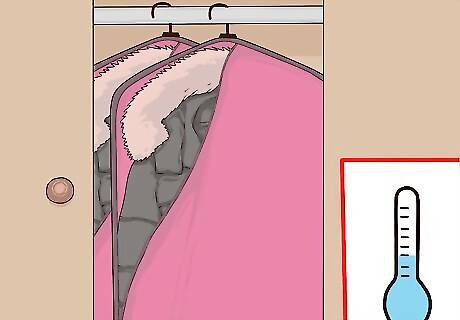
Store your bins, cotton garment bags, and cotton garment boxes. Once you have packed up all of your winter wardrobe in bins, boxes, and bags, you need to find a place to store these containers. Ideally, you should always store clothing in a cool, clean, dark, and dry environment. It is especially important to store your furs in a cool place—the skins will crack if they are too hot. Bright environments will cause your clothing to fade. Damp and hot environments may cause your clothing to become mildewy. Dusty storage spaces will cause your clean clothing to become dirty.
Storing Winter Shoes and Accessories
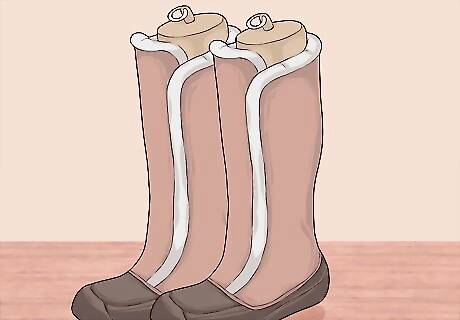
Fill your tall winter boots with boot trees and store. When tall boots are shoved in the back of a closet or haphazardly thrown into a box, they tend to lose their shape. To prevent this from occurring, insert a boot form or tree into each boot. Once your boots are thoroughly cleaned, polished, and conditioned, stand them up in a closet side-by-side. If you don’t have space in a closet, you may store your boots in a plastic bin. Lay a pair of boots on their side in the bin. Place a cotton t-shirt of muslin shoe bag over the boots. Continue to fill the bin with alternating layers of boots and cotton t-shirts/muslin shoe bags. Store the closed bin in a cool, dark, dry, and clean space.
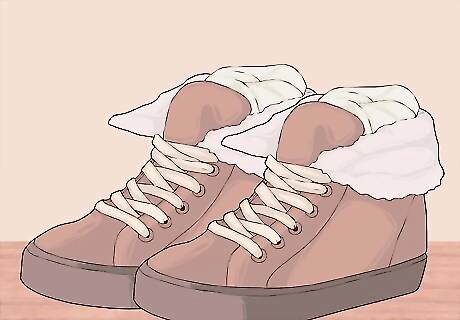
Stuff your non-boots with tissue paper and store. If stored improperly, your ankle boots, winter loafers, and pumps will also become misshapen over time. To help your winter shoes keep their shape, fill each shoe with loosely packed tissue paper. Once filled, carefully stack the shoes in a storage container, such as a plastic bin or basket, your closet, or a designated shoe organizer. Use new tissue paper. Don’t forget to wipe down, polish, and condition your short winter shoes.
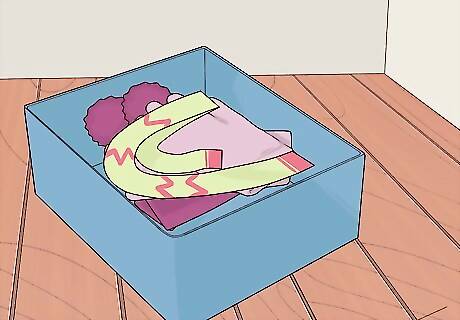
Pack up your winter accessories. At the close of the winter season, you should sort through and clean all of your winter accessories. This may include, hats, gloves, scarves. You can place all of these items into a storage bin, cotton storage box, or a basket. If you have room in your dresser, you can also store winter accessories in a drawer.




















Comments
0 comment